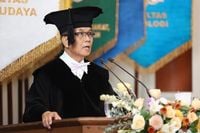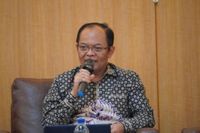In a world increasingly dominated by digital interactions, the evolution of language has become a focal point of cultural discourse. As of 2025, almost all interactions can take place digitally, prompting significant changes in the way we communicate. This shift has led to the emergence of what is known as digital language, which is rapidly evolving in form, function, and delivery. Digital language is not merely a tool for communication; it has become a representation of identity and lifestyle, reflecting the diverse ways individuals express themselves online.
The dynamic nature of digital language has been highlighted in recent discussions among linguists and cultural experts. According to a recent article published on May 8, 2025, the increasing prevalence of social media and online platforms has fostered the development of new linguistic styles. These styles often break from traditional grammatical norms, yet they remain comprehensible to the communities that use them. The article emphasizes that this evolution is not just about changing vocabulary but also about how language serves as a medium for self-expression and cultural identity.
In parallel, the preservation of regional languages faces its own set of challenges amid globalization and the growing influence of foreign languages. The Javanese language, spoken by over 80 million people, is one such example. On May 8, 2025, Professor Dr. Hendrokumoro, a prominent figure in the study of Javanese language and culture, addressed the pressing need to focus on the preservation of regional languages during his inauguration speech as a professor at Gadjah Mada University. He noted that while the Javanese language holds significant cultural value, it is increasingly at risk due to the dominance of foreign languages and modern lifestyles.
“Language not only reflects cultural values and norms but also actualizes daily life,” Dr. Hendrokumoro stated. He stressed the importance of understanding the profound meanings embedded in Javanese expressions, which play a crucial role in shaping character and societal values. He argued that the preservation and development of the Javanese language require serious attention, particularly from academics and language advocates.
Dr. Hendrokumoro pointed out that the Javanese language contains rich cultural wisdom that can significantly benefit society. He suggested that effective preservation efforts could enhance the economic value associated with the language, thus reinforcing its relevance in contemporary times. The Secretary of the Board of Professors at Gadjah Mada University, Professor Dr. Wahyudi Kumorotomo, acknowledged Dr. Hendrokumoro’s contributions, highlighting his role among the 530 active professors at the university.
Meanwhile, in a different part of Indonesia, a local hero named Pardiansyah, affectionately known as Busu Ipay, has taken it upon himself to preserve the Kutai language and culture. Since 2013, Busu Ipay has consistently advocated for the use of the Kutai language in daily life and on social media. He expressed his concern about the diminishing use of local languages among the younger generation, particularly as they gravitate towards national languages like Indonesian or foreign languages.
“When I used languages from outside my region, I felt something was missing from my cultural identity,” Busu Ipay remarked. His commitment to introducing the Kutai language through unique and educational content on social media aims to reconnect people with their ancestral roots. He believes that preserving the Kutai language is not merely about maintaining vocabulary; it is about safeguarding the identity of the Kutai people.
The Kutai language itself is diverse, featuring various dialects such as Puak Pantun, Puak Kedang, and Puak Melanti, each with distinct characteristics. Busu Ipay explained that these dialects can sometimes lead to communication barriers among speakers from different regions. For instance, the word “you” varies significantly across dialects: in Kutai Pantun, it is “kau,” in Tenggarong, it becomes “awak,” and in Kota Bangun, it is referred to as “kula.” Such differences highlight the rich linguistic tapestry of the Kutai language.
By sharing his knowledge and passion for the Kutai language, Busu Ipay serves as a beacon of hope for cultural preservation in the face of globalization. His efforts demonstrate that cultural preservation can take many forms, including informal and everyday practices that resonate with the community. In a time when foreign languages often overshadow local dialects, voices like Busu Ipay's remind us of the importance of maintaining our cultural heritage.
As we navigate the complexities of digital communication and cultural preservation, the interplay between language and identity remains crucial. The emergence of digital language reflects our changing societal norms, while the efforts to preserve regional languages like Javanese and Kutai underscore the need to honor and celebrate our linguistic diversity. In doing so, we not only keep our cultural identities alive but also enrich the broader tapestry of human expression.
In conclusion, the landscape of language is evolving, shaped by both technological advancements and cultural shifts. As we embrace digital communication, it is equally vital to recognize and support the preservation of regional languages that carry the essence of our identities. The stories of individuals like Dr. Hendrokumoro and Busu Ipay serve as powerful reminders of the importance of language in shaping our cultural narratives and fostering community connections.


